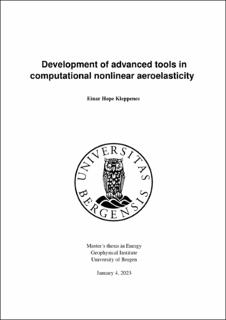| dc.description.abstract | In this work, the development of a two dimensional computational model for predicting the aeroelastic response is presented. In the aeroelastic model presented here, the aeroedynamic and the structural models are considered elements of a single dynamic system. The aerodynamic model is based on the unsteady vortex particle method , while the structural model is based on the paired Adam Bashforth - Adam Moulton second order numerical predictor corrector method.The unsteady vortex particle method is used for computing the aerodynamic forces coming from the free stream velocity and for covecting the wake particles. Usually the wake particles are convected using the explicit Euler method in the wake scheme, which is fast and easy to implement. Here, the explicit linear multistep Adam Bashforth methods are implemented in the wake scheme part of the aerodynamic model. Contrary to the explicit Euler method, these methods depends on the velocities from previous time steps. The nonlinear analysis of the aeroelastic system is more complex and makes it harder to predict the aeroelastic flutter compared to the linear analysis. For this reason, a neural network generated function for computing the correct force and moment terms in the structural model is realized and compared to the analytical linear and nonlinear spring force and moment response. In this thesis, a cubic spring term is added in the structural model of the aeroelastic system. The experimental results using the trained neural network generated spring have shown similar results compared to the case using the analytical expression for the spring, for both the linear and nonlinear structural model. The results presented here illustrate how one can utilize a relatively simple neural network in order to train and predict the subcritical, critical and supercritical flow for the aeroelastic model, when adding a cubic nonlinearity in the structural model of the system. | |
